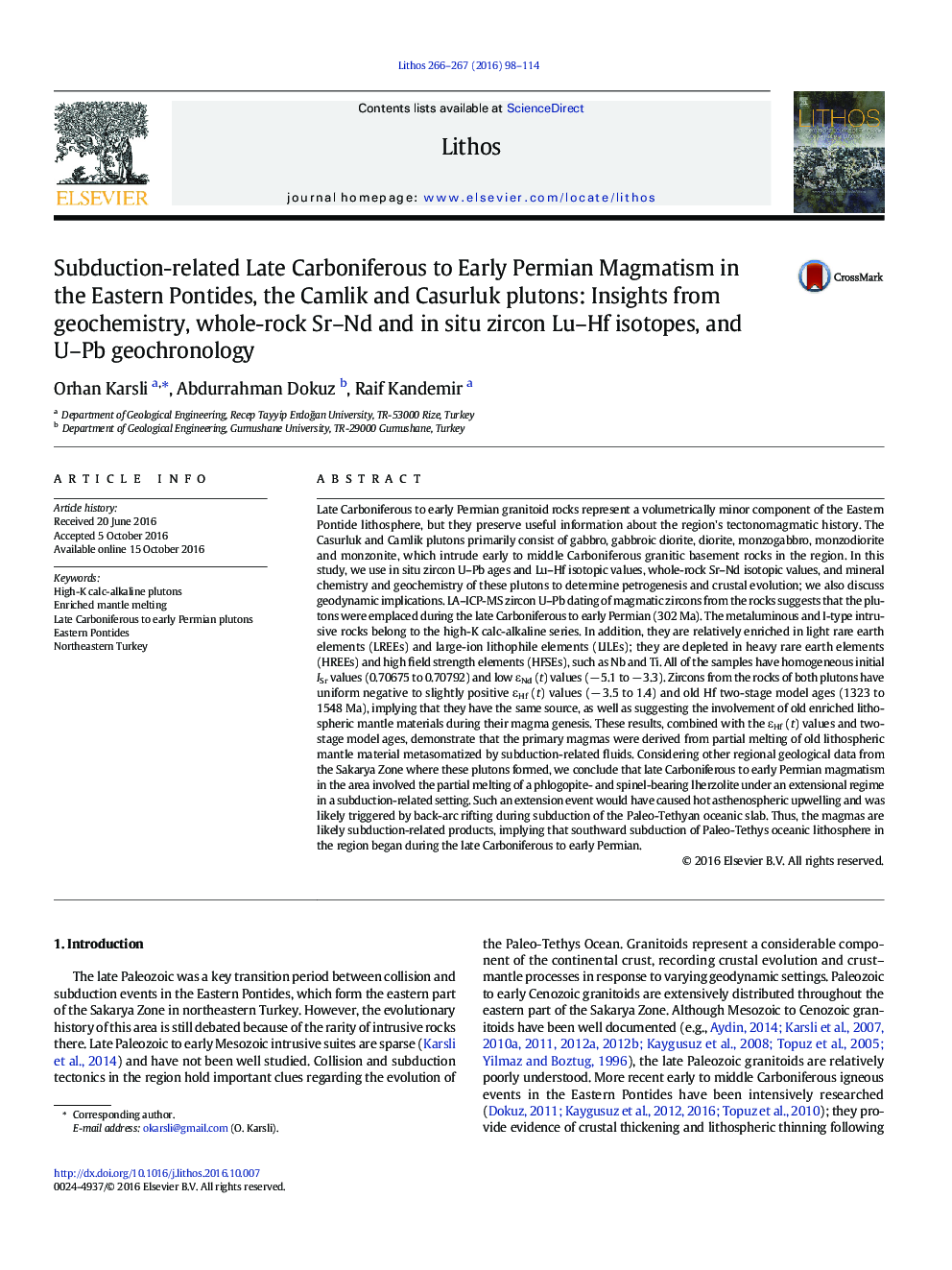| Article ID | Journal | Published Year | Pages | File Type |
|---|---|---|---|---|
| 4715452 | Lithos | 2016 | 17 Pages |
•The plutons formed in late Paleozoic in the Eastern Pontides.•We present the first discovery of late Paleozoic plutons from the region.•Lu–Hf isotopes and trace element modeling show that the plutons have mantle origin.•The plutons occurred in an extensional stage of subduction setting.
Late Carboniferous to early Permian granitoid rocks represent a volumetrically minor component of the Eastern Pontide lithosphere, but they preserve useful information about the region's tectonomagmatic history. The Casurluk and Camlik plutons primarily consist of gabbro, gabbroic diorite, diorite, monzogabbro, monzodiorite and monzonite, which intrude early to middle Carboniferous granitic basement rocks in the region. In this study, we use in situ zircon U–Pb ages and Lu–Hf isotopic values, whole-rock Sr–Nd isotopic values, and mineral chemistry and geochemistry of these plutons to determine petrogenesis and crustal evolution; we also discuss geodynamic implications. LA–ICP-MS zircon U–Pb dating of magmatic zircons from the rocks suggests that the plutons were emplaced during the late Carboniferous to early Permian (302 Ma). The metaluminous and I-type intrusive rocks belong to the high-K calc-alkaline series. In addition, they are relatively enriched in light rare earth elements (LREEs) and large-ion lithophile elements (LILEs); they are depleted in heavy rare earth elements (HREEs) and high field strength elements (HFSEs), such as Nb and Ti. All of the samples have homogeneous initial ISr values (0.70675 to 0.70792) and low εNd (t) values (− 5.1 to − 3.3). Zircons from the rocks of both plutons have uniform negative to slightly positive εHf (t) values (− 3.5 to 1.4) and old Hf two-stage model ages (1323 to 1548 Ma), implying that they have the same source, as well as suggesting the involvement of old enriched lithospheric mantle materials during their magma genesis. These results, combined with the εHf (t) values and two-stage model ages, demonstrate that the primary magmas were derived from partial melting of old lithospheric mantle material metasomatized by subduction-related fluids. Considering other regional geological data from the Sakarya Zone where these plutons formed, we conclude that late Carboniferous to early Permian magmatism in the area involved the partial melting of a phlogopite- and spinel-bearing lherzolite under an extensional regime in a subduction-related setting. Such an extension event would have caused hot asthenospheric upwelling and was likely triggered by back-arc rifting during subduction of the Paleo-Tethyan oceanic slab. Thus, the magmas are likely subduction-related products, implying that southward subduction of Paleo-Tethys oceanic lithosphere in the region began during the late Carboniferous to early Permian.
Graphical abstractFigure optionsDownload full-size imageDownload as PowerPoint slide
